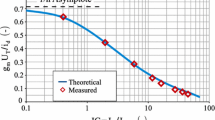Abstract
In this paper, a new derivative-free method for Worst Case Analysis (WCA) of circuit design is defined. A WCA of a device can be performed by solving a particular minimization problem where the objective function values are obtained by a simulation code and where some variables are subject to a spherical constraint and others to box constraints. In order to efficiently tackle such a problem, the paper defines a new DF algorithm which follows a two blocks Gauss Seidel approach, namely it alternates an approximated minimization with respect to the variables subject to the spherical constraint with an approximated minimization respect to the variables subject to the box constraints. The algorithm is described and its global convergence properties are analyzed. Furthermore it is tested in the WCA of a MOSFET operational amplifier and its computational behaviour is compared with the one of the efficient optimization tool of the WiCkeD suite for circuit analysis. The obtained results seem to indicate that the proposed algorithm is promising in terms of average efficiency, accuracy and robustness.


Similar content being viewed by others
References
Abramson, M.A., Audet, C., Dennis Jr., J.E., Digabel, S.: Orthomads: a deterministic mads instance with orthogonal directions. SIAM J. Optim. 20(2), 948–966 (2009)
Allen, P.E., Holberg, D.R.: CMOS Analog Circuit Design. Oxford University Press, Oxford (2010)
Antreich, K., Eckmueller, J., Graeb, H., Pronath, M., Schenkel, F., Schwencker, R., Zizala, S.: WiCkeD: analog circuit synthesis incorporating mismatch. In: Proceedings of the IEEE Custom Integrated Circuits Conference, pp. 511–514 (May 2000)
Audet, C., Dennis Jr., J.E.: A progressive barrier for derivative-free nonlinear programming. SIAM J. Optim. 20(1), 445–472 (2009)
Bazaraa, M.S., Sherali, H.D., Shetty, C.M.: Nonlinear Programming: Theory and Algorithms. Wiley, Hoboken (2013)
Bertsekas, B.P.: Nonlinear Programming. Athena Scientific, Belmont (1999)
Cadence Design Systems GmbH: Virtuoso spectre circuit simulator and accelerated parallel simulator user guide. In: Product Version 13.1.1, (April 2014). https://www.cadence.com
Ciccazzo, A., Di Pillo, G., Latorre, V., et al.: A SVM Surrogate Model Based Method for Yield Optimization in Electronic Circuit Design. Technical Report, Department of Computer, Control and Management Engineering, Universita’degli Studi di Roma“ La Sapienza” (2015)
Ciccazzo, A., Latorre, V., Liuzzi, G., Lucidi, S., Rinaldi, F.: Derivative-free robust optimization for circuit design. J. Optim. Theory Appl. 164(3), 842–861 (2013)
Conn, A.R., Scheinberg, K., Vicente, L.N.: Introduction to Derivative-Free Optimization, vol. 8. SIAM, Philadelphia (2009)
Eshbaugh, K.S.: Generation of correlated parameters for statistical circuit simulation. IEEE Trans. Comput. Aided Des. Integr. Circuits Syst. 11(10), 1198–1206 (1992)
Fasano, G., Liuzzi, G., Lucidi, S., Rinaldi, F.: A linesearch-based derivative-free approach for nonsmooth constrained optimization. SIAM J. Optim. 24(3), 959–992 (2014)
Gao, W., Hornsey, R.: A power optimization method for CMOS Op-Amps using sub-space based geometric programming. In: Proceedings of the IEEE Conference on Design, Automation and Test in Europe, pp. 508–513 (March 2010)
Gielen, G.G.E., Walscharts, H.C.C., Sansen, W.M.C.: Analog circuit design optimization based on symbolic simulation and simulated annealing. IEEE J. Solid State Circuits 25(3), 707–713 (1990)
Graeb, H.: Analog Design Centering and Sizing, Chapter 5, pp. 90–99. Springer, Berlin (2007)
Kesidis, G.: Analog optimization with Wong’s stochastic neural network. IEEE Trans. Neural Netw. 6(1), 258–260 (1995)
Kolda, T.G., Lewis, R.M., Torczon, V.: Optimization by direct search: new perspectives on some classical and modern methods. SIAM Rev. 45(3), 385–482 (2003)
Kundert, K., Chang, H., Jefferies, D., Lamant, G., Malavasi, E., Sendig, F.: Design of mixed-signal systems-on-a-chip. IEEE Trans. Comput. Aided Des. Integr. Circuits 19(12), 1561–1571 (2000)
Lucidi, S., Sciandrone, M.: A derivative-free algorithm for bound constrained optimization. Comput. Optim. Appl. 21(2), 119–142 (2002)
Lucidi, S., Sciandrone, M.: On the global convergence of derivative-free methods for unconstrained optimization. SIAM J. Optim. 13(1), 97–116 (2002)
Lucidi, Stefano, Sciandrone, Marco, Tseng, Paul: Objective-derivative-free methods for constrained optimization. Math. Program. 92(1), 37–59 (2002)
MunEDA GmbH: Manual for WiCkeD 6.7 (2014). https://www.muneda.com
Morshed, T.H., et al.: BSIM4v4. 7 MOSFET model. Department of Electrical Engineering and Computer Science, University of California, Berkeley, CA, USA, Technical Report (2011)
Nye, W., Riley, D., Sangiovanni-Vincentelli, A., Tits, A.: DELIGHT.SPICE: an optimization-based system for the design of integrated circuits. IEEE Trans. Comput. Aided Des. Integr. Circuits 7, 501–519 (1988)
Powell, M.J.D.: A direct search optimization method that models the objective and constraint functions by linear interpolation. In: Advances in Optimization and Numerical Analysis, pp. 51–67. Springer (1994)
Somani, A., Chakrabarti, P.P., Patra, A.: An evolutionary algorithm-based approach to automated design of analog and RF circuits using adaptive normalized cost functions. IEEE Trans. Evol. Comput. 11(3), 336–353 (2007)
Author information
Authors and Affiliations
Corresponding author
Rights and permissions
About this article
Cite this article
Latorre, V., Habal, H., Graeb, H. et al. Derivative free methodologies for circuit worst case analysis. Optim Lett 13, 1557–1571 (2019). https://doi.org/10.1007/s11590-018-1364-5
Received:
Accepted:
Published:
Issue Date:
DOI: https://doi.org/10.1007/s11590-018-1364-5




